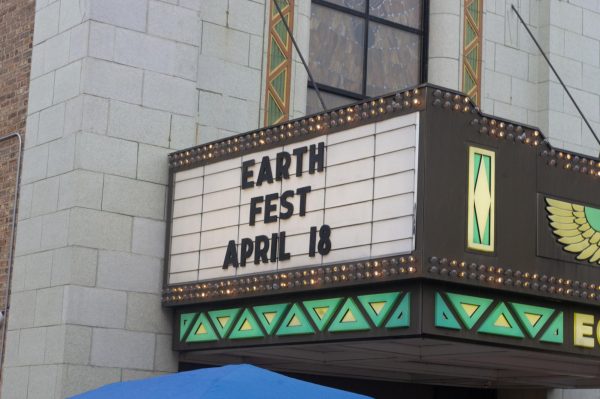‘Doom’
October 27, 2005
Video games are often at a disadvantage in Hollywood. Titles such as “Halo,” “Metal Gear Solid” and “Resident Evil” blur the line between player-directed action and professional quality cinema. Unfortunately, one only needs to look at the 1993 bomb “Super Mario Bros.” to see, quite generally, movie adaptations butcher their pixellated counterparts beyond all recognition. The closest thing the video game movie genre has to a classic is “Mortal Kombat,” and sadly, “Doom” isn’t anywhere near even this standard.
In the future, a mysterious portal known as the Ark is discovered, leading to the remains of an extinct martian civilization. When a research facility centered around the Ark releases a distress signal, a team of heavily-armed Marines led by Sarge (The Rock) is dispatched to investigate. A Marine code-named Reaper (Karl Urban) has a personal interest in the mission, as his sister Samantha (Rosamund Pike) is stationed at the facility. Sarge, Reaper, Samantha and an ever-dwindling number of Marines are soon forced to do battle against mysterious beasts stalking the corridors of the facility.
Fortunately, the aforementioned mysterious beasts aren’t the product of ill-conceived computer animators. The monsters of “Doom” are all the work of Stan Winston Studios, responsible for such creature features as “The Thing,” “Predator” and “Jurassic Park.” From the bug-eyed imps to the muscular demons, everything bloody and slimy in the film works perfectly. However, the monsters aren’t the focus of the film and it seems the beasts are eventually overshadowed altogether by a rather dull attempt at human conflict.
The movie fails because of its skewed sense of morality. Horror movies often work with an underlying sense of morality, but “Doom” operates under a naturalistic setting, in which those terrorized by the antagonistic forces are arbitrary victims who might not deserve such frightful afflictions.
But this is complicated by the addition of “chromosome 24,” the genetic map of the soul, which can make some people superhumans and others inhuman monsters. The movie presumes the chromosome makes good people the former and bad people the latter. This development ends up contradicting itself, as a boatload of innocent people turn into monsters and only one person (the hero), not surprisingly, becomes superhuman.
The first-person perspective seen in the trailer is little more than a gimmick. The technique is only used for 10 minutes, and while it’s 10 minutes of fast-paced, heart-thumping action, the rest of the movie after the scene quickly looks bland. Much of “Doom” is like this. “Doom” had an accessible plot that should lend itself perfectly to a simple Saturday night shoot ‘em up, but as the doomed adaptation illustrates, nothing is ever simple in Hollywood.











